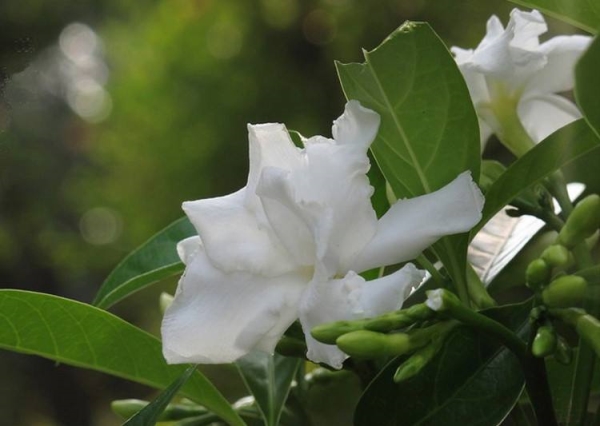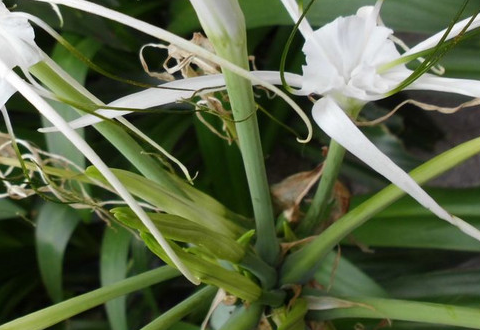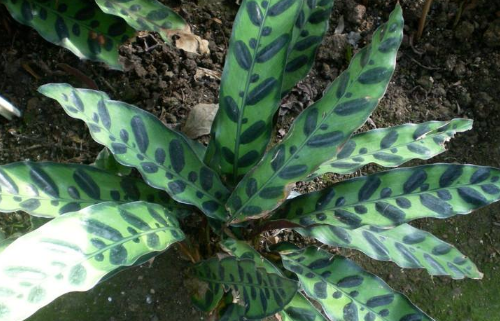Matters needing attention in breeding Bermuda
Bermudagrass has a great demand for nutrients, so we need to apply fertilizer in time before flowering, and it is appropriate to apply compound fertilizer and nitrogen fertilizer alternately, which is beneficial to its flowering and increase the amount of flowering.

Breeding methods and matters needing attention of Bermudagrass
The cultivation method of Bermudagrass, soil
Bermudagrass does not have strict requirements on the soil in the growing environment, but it grows best in the acid soil with loose fertility and good drainage.
Watering
In the daily maintenance process, to keep the soil moist, do not wait until the basin soil is completely dry before watering, summer should often spray water around to increase air humidity.
Temperature
The suitable temperature for the growth of Bermudagrass is above 10 ℃. If it is below this temperature, the leaves will turn yellow, and the branches below 0 ℃ will be frostbitten.
Light
The dog tooth flower sex likes to be warm and humid, likes the sunshine is abundant, must maintain the good light in the cultivation process, otherwise the leaf color is dark yellow, may even fall off.
Fertilizer application
Bermudagrass likes fertile soil, and its flowering period is longer, so it needs timely fertilization.
Compound fertilizer and manure water should be applied alternately every 10 days.
Matters needing attention in dog tooth flower culture proper watering in winter
At the end of October, the dog tooth flower needs to be moved indoors for breeding. At this time, it is common to water it once every 7 days, and the soil can be slightly moist.
Change the basin regularly
The dog tooth flower moved outside in April and changed the basin every 1-2 years. When changing the basin, it was necessary to add compound fertilizer or bean cake as the base fertilizer, trim the dead branches and weak branches, and then place them in a semi-shady place for maintenance.
Keep the light.
The dog tooth flower likes the environment where there is plenty of light, so it should be placed in the place where there is sunlight to absorb the scattered light from the sun.
Summer sun exposure, to be placed in a semi-shady place, so as not to burn the leaves.
Breeding methods and precautions of Bermuda Flower Disease and Pest Control
Dog tooth flower likes warm and humid, not cold-resistant, should be semi-shady, suitable for planting in fertile, well-drained acidic soil. The planting of Bermuda is mainly by cutting, which can be carried out all the year round in the greenhouse, and it is best to cut outside from June to July. What are the planting methods and points for attention of Bermudagrass? Today, the editor would like to share with you.
The breeding method of Bermudagrass
Water management
Usually to keep the soil moist, it is appropriate to water not dry, summer should often spray water around to increase the air humidity of the environment.
Fertilization management
The dog tooth flower is good fertilizer, and the florescence is long. From May to September, it is appropriate to apply compound fertilizer and manure fertilizer and water alternately every 7-10 days. After entering the house at the end of October, water is usually watered once every 5-7 days, the soil is slightly moist, and good light is maintained.
Temperature management
The room temperature should be kept above 10 ℃, otherwise the leaves will turn yellow and fall off, and the branches below 0 ℃ will be frozen.
Light management
Bermudagrass is a positive tree, and good light must be maintained in the process of cultivation, otherwise the leaves will be dark yellow or even fall off.
Disease control of Bermudagrass
Aphids
The body length is 1.5 mm to 4.9 mm, mostly about 2 mm. Sometimes covered with wax powder, but lack of wax flakes. Antennae 6, a few 5, rare 4, sensory circle round, rare oval, the end of the terminal segment is often longer than the base. The eye is big, much small eye face, often have prominent 3 small eye face eye tumor. The terminal segment of the beak is short and obtuse to long apical. The abdomen is larger than the sum of the head and chest. There are often marginal tumors in each segment of the forechest and abdomen. The ventral tube is usually tubular, the length is often greater than the width, the base is thick, tapering to the end, the middle or the end is sometimes dilated, the top is often fringed, the surface is smooth or tiled or the end has a reticulate pattern, it is rare to have little or more hair, and it is rare that the abdominal canal is annular or absent. The tail is vertebra-shaped, finger-shaped, sword-shaped, triangular, pentagonal, helmet-shaped to semilunar. The end of the tail plate is round. The epidermis is smooth, reticulated or wrinkled, or marked by prickles or particles. The body hair is sharp or the tip is swollen into a head or fan. The antennae of winged aphids usually have 6 segments, and segments 3 or 3 and 4 or 3 have secondary sensory circles. The midvein of the anterior wing is usually divided into 3 branches and a few into 2 branches. The hind wing usually has 2 elbow veins, and it is rare that the hind wing becomes smaller and the wing vein degenerates. Wing veins sometimes with black edges.
Prevention and cure
In the prevention and control of aphids, various means should be used to stop their harmful activities, mainly in the following points:
First, to eliminate aphids, starting from the overwintering period of flowers, we can get twice the result with half the effort. For example, if we rely solely on the spring and autumn where the aphid damage is most serious, the control effect is not significant.
Second, the newly introduced flower species and seedlings should be strictly checked to prevent the invasion of new pests from other places, and the soil and old flowerpots should be disinfected to kill the residual eggs.
Third, combined with pruning, the residual flowers and withered branches and leaves that are inhabited by aphids or latent eggs will be completely removed and burned.
Fourth, different varieties of flowers have different insect resistance. Disease-resistant varieties should be selected, which can not only reduce the harm of aphids but also save drug costs.
5. When a small number of aphids are found, you can brush them with a brush dipped in water, or put the potted flowers under tap water to rotate and rinse, which can not only kill the aphids, but also wash the leaves, improve the ornamental value and promote foliar respiration; if possible, natural enemies such as ladybugs and lacewings can also be used to control them.
6. when a large number of aphids are found, they should be isolated in time, and drugs or local methods should be selected immediately to eliminate insect pests. The specific measures are as follows:
1. Prepare tobacco water with the proportion of 1:15, soak for 4 hours and then spray.
2. Spray the solution of detergent, urea and water with the proportion of 1 / 4 / 4 / 400.
3. Spray with 1000 times of omethoate emulsion or 1000 to 1500 times of Mala sulfur emulsion or 1000 times of dichlorvos EC.
4. For aphids covered with wax powder, such as peach powder aphid, 1 ‰ neutral soapy water or washing powder should be added when any pesticide is applied.
That's all I know about Gouya Flower today. I hope it will be helpful for you to read this article. If you want to know more about Gouya Flower, please continue to pay attention to the succulent flower bed, we will provide you with more related knowledge!
- Prev

Breeding method of water ghost banana
The bulb propagation is generally carried out from April to May, and the sphere can be dug out during the basin change. it can be divided and cultivated, and it is not suitable for deep planting, and the neck of the ball can be flat with the ground. In ramet propagation, the mother plant of banana usually grows some small buds, which can be used to divide the plant, and the mother plant is usually dragged in the basin from February to March in spring.
- Next

How to raise Arrow feather Bamboo Taro
1. Fertile soil if you want to make the arrow feather bamboo taro lush, the most important thing is a pot of fertile, loose and permeable soil. Only very breathable soil can make Taro grow faster. It is best to mix rotten leaf soil with peat soil and perlite at 5:3:2.
Related
- Fuxing push coffee new agricultural production and marketing class: lack of small-scale processing plants
- Jujube rice field leisure farm deep ploughing Yilan for five years to create a space for organic food and play
- Nongyu Farm-A trial of organic papaya for brave women with advanced technology
- Four points for attention in the prevention and control of diseases and insect pests of edible fungi
- How to add nutrient solution to Edible Fungi
- Is there any good way to control edible fungus mites?
- Open Inoculation Technology of Edible Fungi
- Is there any clever way to use fertilizer for edible fungus in winter?
- What agents are used to kill the pathogens of edible fungi in the mushroom shed?
- Rapid drying of Edible Fungi

